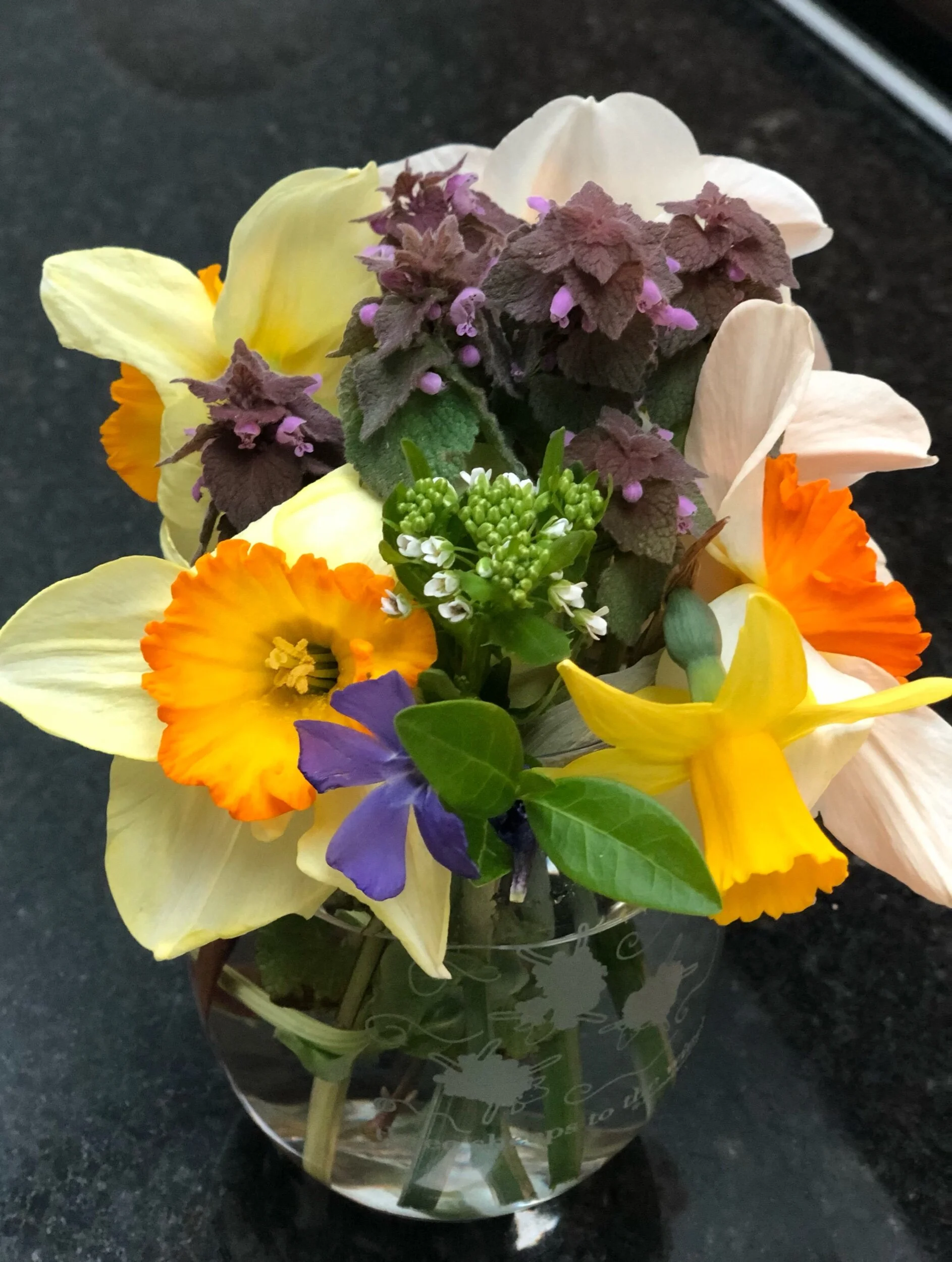Through Six-Year-Old Eyes
My youngest granddaughter was visiting my husband and me this past week-end, along with her older brother. She’s six years old, at an age where she sees wonder all about her. Everywhere she looks, she finds beauty. I remember my two older granddaughters being the same way when they were six, excited with simply being alive, the world at their feet. Sadly, such innocent joy often is outgrown with the cares of growing up and out.
This weekend, each time Elyse returned from a walk with her PopPop, her slim little hand seriously clutching a droopy bunch of weeds and flowers, a solemn offer of love: daffodils, ajuga, wild henbit, dandelions, and some other white wild flowers I couldn’t identify. She was so proud of her bouquets, wanting me to know just how much she loved me with this humble collection of wild and tame. I’ve received many such bouquets from my grandchildren over the years; their wonder at the beauty of their natural surroundings always blesses me, making me smile at their own joy in the giving of their gift.
But this bouquet? It was a bit more special this time, perhaps because my days of getting such wild-flower-collections from innocent hands are waning. The world, as viewed through six-year-old eyes, is profound in its innocence, vibrant in its joy, but fleeting in time.
This bouquet was special because as I gazed upon it, I realized something about children I’ve known for many years- that they perceive all things with equal wonder. All is acceptable, all is beautiful, all is wonderful, and nothing is rejected - unless they are taught to reject, to winnow out, to discard. To Elyse, a wild flower-weed is as beautiful as the daffodil. She sees only the bright splash of color, the sweet shape of the thing, the joy of gathering and the presentation; the giving over of her bouquet to Mom or Mémère or Grandma. She sees the glory of blooming flowers as applied to all blooms - not just cultivated flowers that have gained acceptance, that are “approved” as legitimate, “real” flowers to be cut and admired. Weeds and wild share the stage.
Last year? She saw the glorious Rosa Rugosa as equal to the delicate Queen Anne’s Lace that grew with wild abandon along the woods by the house.
Children are like that, in their natural, unaltered state. And as to people as to flowers. They do not perceive black or brown or white or yellow on the skin as of any consequence. A person is a person, to be enjoyed because of a smile, or a soft voice, or a gentle hug. Rarely will a child judge another based upon disability, or looks or color; it is the harsh words of adults that clang loud upon a child’s ear, bending thoughts into misshapen specters of what should be, what ought to be; what is acceptable, what is not. And that is sad, indeed.
I took a picture of my wildflower bouquet, mixed with daffodils, and have put it up here for all to enjoy. I will keep it to remind me that no matter the shape or color of a thing; no matter whether a rare bloom, or a carpet of wildflowers or a pack of weeds, it is all part of the same natural world of beauty that surrounds us. As it should be with people— of a mix— wild, tame, beautiful; of colors varied, in sizes abounding, filled with lovely scents, or prickly thorns - all acceptable for who they are, in the place they bloom, to be loved just as they are found, to be gathered together without thought for what fits, or what looks good, or what is acceptable.
The most beautiful of bouquets consist of unexpected riots of color, gathered wild together in riotous, joyful glory. As in flowers, so with people. As it should be.
Learning to see through a six-year-old’s eyes. A lesson learned and cherished.

